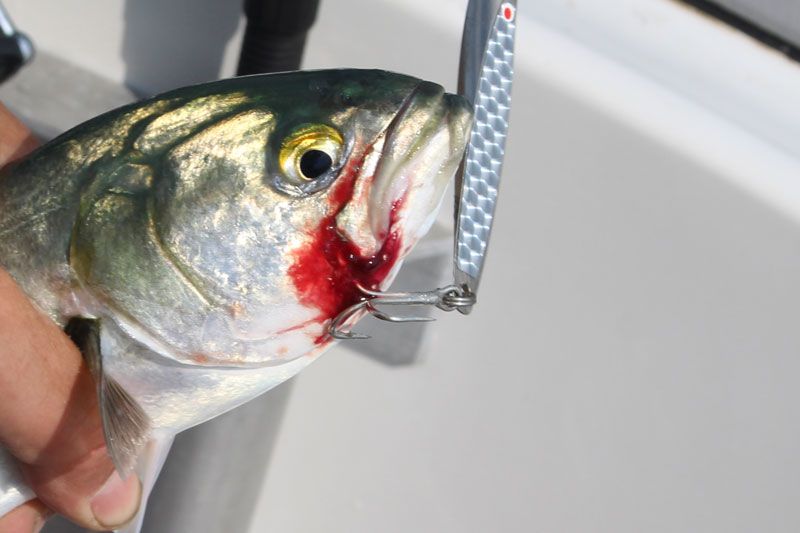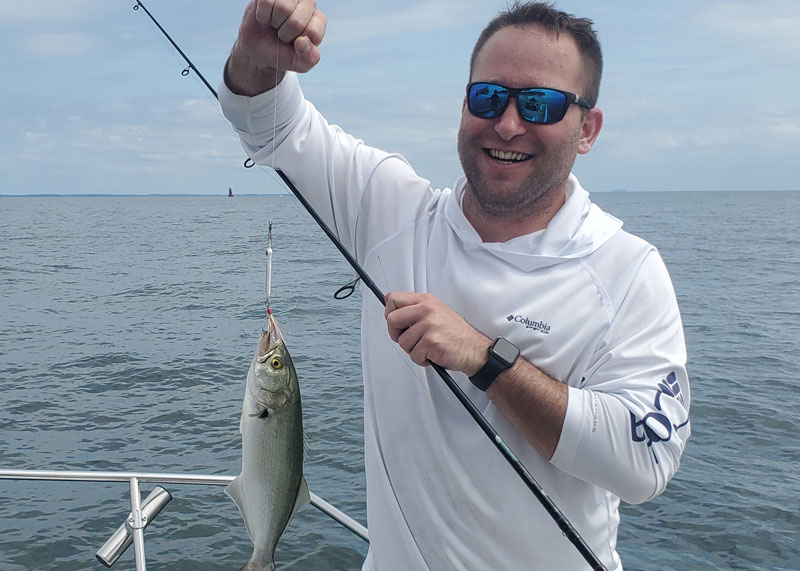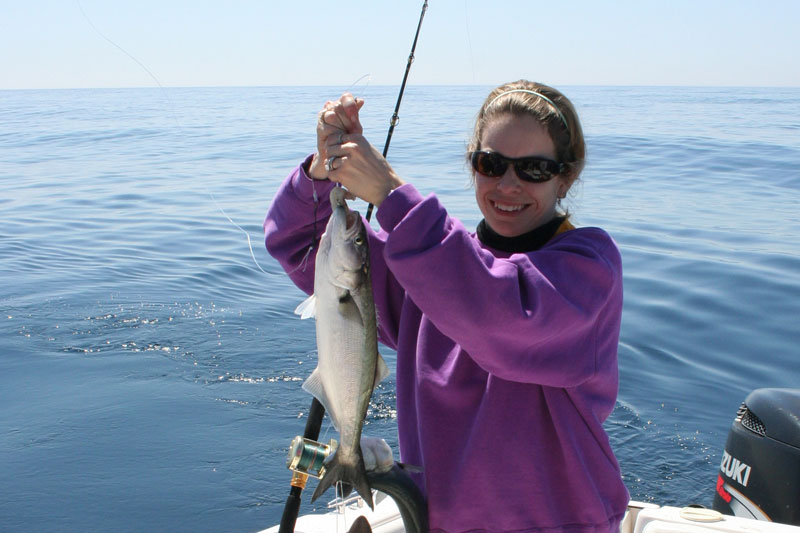When it comes to the most dangerous fish to catch in the ocean most people think of fishing for sharks. Other toothy predators like wahoo can also do serious damage to an angler, and billfish have been known to spear humans now and again. But it’s the lowly bluefish that hurts more people each and every year. Of course, this danger-factor won’t stop we adventurous anglers from targeting the most injurious fish in the sea. So the next time you decide to put bluefish in your sights, use these tricks to get your rod bending.

3 Tips for Lure Fishing for Bluefish
- Chopper blues are very sensitive to vibrations. When the water is off-color and/or light levels are low, lures that vibrate or create a disturbance in the water, like wobbling spoons or plugs with rattles, are often the most effective.
- Bluefish will eat just about anything, but the majority of their diet is made up of finfish. Accordingly, they’re attracted to lots of flash. When choosing artificial lures for trolling or casting, shiny silver metals often work best. Spoons enjoy the added advantages of being bite-proof, and of providing you with a “handle” to grab when you bring the fish into the boat. Classics like the Huntington Drone or Tony Acetta Pet work great for ‘em.
- Unless the fish are breaking water, troll more and cast less. Blues aren’t as structure-oriented as they are interested in where the bait is, so they often rove around through open waters. Unless the location of a school is visible, staying on the move and covering ground is usually a better bet.

3 Tips for Bait Fishing for Bluefish
- Bluefish feed by cutting chunks out of their prey’s body, so if you’re bait fishing don’t freespool on a strike and wait for the fish to inhale your offering. Instead, keep a taut line and set the hook the moment you feel a bite. If it takes the fish several hits before they find your hook, consider down-sizing the baits so the fish can grab your entire offering — hook included — on the first attack.
- If you’re live-lining spot and bluefish keep snapping off the heads or tails, consider switching to chunks (and see above).
- If you’re catching fish and running low on bait don’t hesitate to slice off the flank of the smallest blue in your cooler and chop it into strips. These fish are cannibalistic, and are perfectly happy to eat bluefish chunks.
And Four More for All Types of Bluefish Fishing
- Blues like to jump, so be prepared for aerial acrobatics. When one comes out of the water reel as fast as possible to maintain tension at all times. And during the fight, keep your rod tip low and out to the side instead of up high because less of an upward angle will discourage jumping.
- Don’t worry about reeling or trolling too quickly, because these are fast-paced fish. Even trolling for mackerel at nine mph you’ll still catch some (though going that fast certainly will diminish the numbers), and most of the time there’s a much better chance your offering will be moving too slowly to generate their interest as opposed to too quickly for them to catch.
- If you want to catch real “choppers” in the 10-plus pound range, head for the ocean and fish inshore shoals. Choppers used to dominate the Chesapeake and although far fewer real trophies have come up in the Bay in recent decades, they can still be found off the coast. Note: Remember that blues over five or six pounds are not very good to eat, and most anglers practice catch-photo-release.
- Finally — and we’re betting you already guessed this — use a trace of wire leader to prevent bite-offs.

Bluefish: Handle With Caution
- Never put a finger into a bluefish’s mouth when taking a hook out. Use pliers or if the hook’s too deep cut the line well outside the fish’s mouth and consider the hook a loss.
- Don’t slide your hand under the gill plate of a bluefish to hold it. If it thrashes (and blues often do) your hand may slide up too far and become exposed to the fish’s back teeth. Instead, wrap your hand around the fish from the back side. With larger blues, you can also grab the base of the fish’s tail with your other hand and have a buddy remove the hook.
- Bluefish and treble hooks don’t mix. Remember, these fish often thrash around in a rather chaotic manner. All too often, they’ll sink a treble into an angler’s hand or arm as they do so.